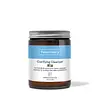What's inside
What's inside
 Key Ingredients
Key Ingredients

 Benefits
Benefits

 Concerns
Concerns

 Ingredients Side-by-side
Ingredients Side-by-side

Water
Skin ConditioningPropanediol
SolventGlycolic Acid 4%
BufferingCetyl Alcohol
EmollientGlyceryl Stearate
EmollientSalicylic Acid 2%
MaskingPolyglyceryl-6 Stearate
EmollientSodium Glycolate
BufferingQuillaja Saponaria Bark Extract
CleansingLactic Acid 1%
BufferingSodium Salicylate
PreservativeCetyl Hydroxyethylcellulose
Emulsion StabilisingGlyceryl Caprylate
EmollientSodium Lactate
BufferingPolyglyceryl-6 Behenate
Emulsion StabilisingCitric Acid
BufferingPotassium Sorbate
PreservativeCitrus Nobilis Peel Oil 0.97%
MaskingWater, Propanediol, Glycolic Acid 4%, Cetyl Alcohol, Glyceryl Stearate, Salicylic Acid 2%, Polyglyceryl-6 Stearate, Sodium Glycolate, Quillaja Saponaria Bark Extract, Lactic Acid 1%, Sodium Salicylate, Cetyl Hydroxyethylcellulose, Glyceryl Caprylate, Sodium Lactate, Polyglyceryl-6 Behenate, Citric Acid, Potassium Sorbate, Citrus Nobilis Peel Oil 0.97%
Water
Skin ConditioningCetyl Alcohol
EmollientPrunus Armeniaca Kernel Oil
MaskingGlycerin
HumectantGlyceryl Stearate Se
EmulsifyingPrunus Amygdalus Dulcis Oil
Skin ConditioningStearic Acid
CleansingSodium Ascorbyl Phosphate
AntioxidantPersea Gratissima Oil
Skin ConditioningXanthan Gum
EmulsifyingSodium Levulinate
Skin ConditioningSodium Anisate
AntimicrobialGlyceryl Caprylate
EmollientCitrus Nobilis Peel Oil 0.205%
MaskingIngredients Explained
These ingredients are found in both products.
Ingredients higher up in an ingredient list are typically present in a larger amount.
Cetyl Alcohol is a fatty alcohol. Fatty Alcohols are most often used as an emollient or to thicken a product.
Its main roles are:
Though it has "alcohol" in the name, it is not related to denatured alcohol or ethyl alcohol.
The FDA allows products labeled "alcohol-free" to have fatty alcohols.
Learn more about Cetyl AlcoholCitrus Nobilis Peel Oil is an oil.
Glyceryl Caprylate comes from glycerin and caprylic acid, a fatty acid from coconut. It has emollient and emulsifier properties.
As an emollient, it helps hydrate your skin. Emollients work by creating a barrier on your skin to trap moisture in, helping to keep your skin soft and smooth.
On the other hand, emulsifiers prevent ingredients (such as oil and water) from separating.
Learn more about Glyceryl CaprylateWater. It's the most common cosmetic ingredient of all. You'll usually see it at the top of ingredient lists, meaning that it makes up the largest part of the product.
So why is it so popular? Water most often acts as a solvent - this means that it helps dissolve other ingredients into the formulation.
You'll also recognize water as that liquid we all need to stay alive. If you see this, drink a glass of water. Stay hydrated!
Learn more about Water